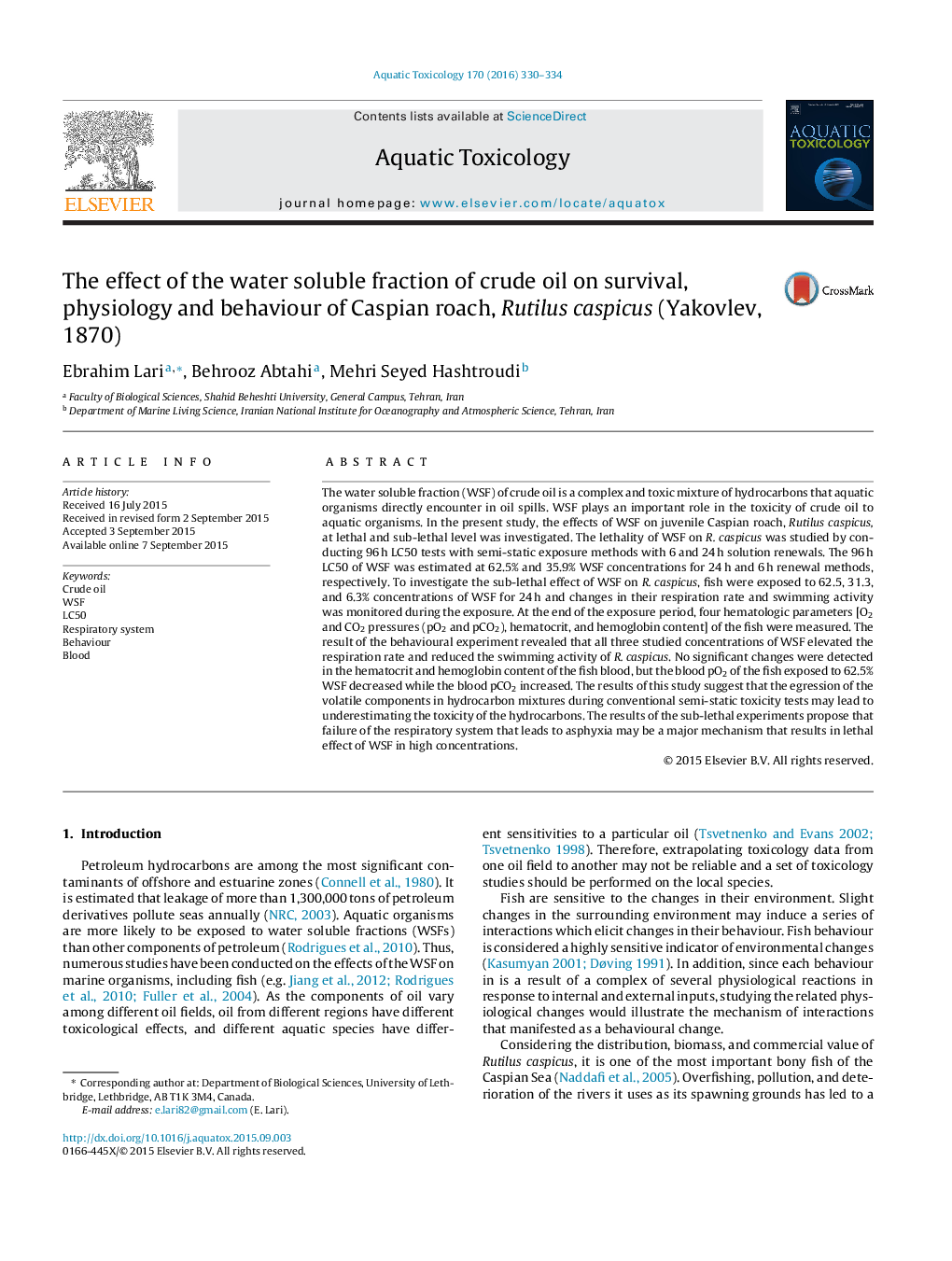| کد مقاله | کد نشریه | سال انتشار | مقاله انگلیسی | نسخه تمام متن |
|---|---|---|---|---|
| 4528993 | 1625935 | 2016 | 5 صفحه PDF | دانلود رایگان |
• Egression of the volatile components causes underestimating the toxicity of WSF.
• Acute exposure to WSF increases the respiration rate and decreases activity of fish.
• Acute exposure to WSF changes the gas pressure of O2 and CO2 in fish blood.
• The hemoglobin and hematocrit of fish do not change in acute exposure to WSF.
The water soluble fraction (WSF) of crude oil is a complex and toxic mixture of hydrocarbons that aquatic organisms directly encounter in oil spills. WSF plays an important role in the toxicity of crude oil to aquatic organisms. In the present study, the effects of WSF on juvenile Caspian roach, Rutilus caspicus, at lethal and sub-lethal level was investigated. The lethality of WSF on R. caspicus was studied by conducting 96 h LC50 tests with semi-static exposure methods with 6 and 24 h solution renewals. The 96 h LC50 of WSF was estimated at 62.5% and 35.9% WSF concentrations for 24 h and 6 h renewal methods, respectively. To investigate the sub-lethal effect of WSF on R. caspicus, fish were exposed to 62.5, 31.3, and 6.3% concentrations of WSF for 24 h and changes in their respiration rate and swimming activity was monitored during the exposure. At the end of the exposure period, four hematologic parameters [O2 and CO2 pressures (pO2 and pCO2), hematocrit, and hemoglobin content] of the fish were measured. The result of the behavioural experiment revealed that all three studied concentrations of WSF elevated the respiration rate and reduced the swimming activity of R. caspicus. No significant changes were detected in the hematocrit and hemoglobin content of the fish blood, but the blood pO2 of the fish exposed to 62.5% WSF decreased while the blood pCO2 increased. The results of this study suggest that the egression of the volatile components in hydrocarbon mixtures during conventional semi-static toxicity tests may lead to underestimating the toxicity of the hydrocarbons. The results of the sub-lethal experiments propose that failure of the respiratory system that leads to asphyxia may be a major mechanism that results in lethal effect of WSF in high concentrations.
Journal: Aquatic Toxicology - Volume 170, January 2016, Pages 330–334
